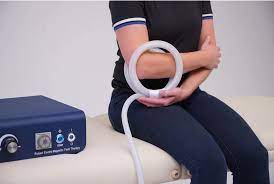In the ever-evolving landscape electromagnetic therapy for pain of healthcare technology, architects are emerging as crucial contributors to the design and development of medical devices. Their expertise in spatial design, user experience, and problem-solving makes them invaluable in creating devices that not only meet medical needs but also enhance the overall patient and healthcare professional experience. This article explores the role of architects in the medical device industry, highlighting the synergy between design and healthcare innovation.
Design Thinking in Healthcare:
Architects are trained in the principles of design thinking, a problem-solving approach that emphasizes empathy, ideation, and prototyping. This methodology aligns seamlessly with the challenges faced in healthcare, where the need for patient-centered solutions is paramount. Applying design thinking to medical devices ensures that the end product is not only functional but also user-friendly and adaptable to various healthcare settings.
Patient-Centered Design:
One of the primary contributions architects bring to the medical device field is a focus on patient-centered design. This approach involves considering the needs, preferences, and experiences of patients when creating a medical device. Architects work closely with healthcare professionals and patients to understand the intricacies of medical procedures, the patient journey, and the environmental factors that impact device usability. This collaboration results in devices that are not only effective but also enhance the overall patient experience.
Spatial Considerations in Healthcare Environments:
Architects excel in understanding spatial dynamics, and this skill is highly applicable in the healthcare sector. Medical devices must seamlessly integrate into diverse healthcare environments, from hospitals to clinics and even home settings. Architects contribute by designing devices that are ergonomic, easily maneuverable, and compatible with existing infrastructures. They address spatial constraints and optimize the layout of healthcare spaces to accommodate the use of these devices efficiently.
Innovative Solutions for Healthcare Challenges:
Architects are known for their ability to think outside the box. And this creativity is invaluable in tackling complex healthcare challenges. They bring fresh perspectives to the table, often proposing innovative solutions that enhance the functionality and usability of medical devices. Whether it’s reimagining the design of diagnostic equipment or developing novel ways to integrate technology into patient care. Architects play a pivotal role in pushing the boundaries of what is possible in healthcare technology.
The Integration of Technology and Aesthetics:
Medical devices designed by architects often showcase a seamless integration of technology and aesthetics. While functionality remains a priority, the visual appeal of medical. Devices is increasingly recognized as an essential factor in user acceptance and overall satisfaction. Architects contribute to the creation of devices that not only perform well . But also contribute to a positive and comforting healthcare environment.
Conclusion:
As the healthcare industry continues to embrace technological advancements, the role of architects. In the design and development of electromagnetic therapy for pain devices becomes increasingly crucial. Their unique skill set, combining design thinking. Spatial understanding, and innovation, positions architects as valuable contributors to the creation of patient-centered and efficient healthcare solutions. The collaboration between architects, healthcare professionals, and technology experts. Promises a future where medical devices not only address needs. But also enhance the overall well-being of patients and streamline healthcare processes.

